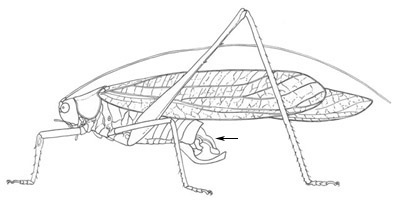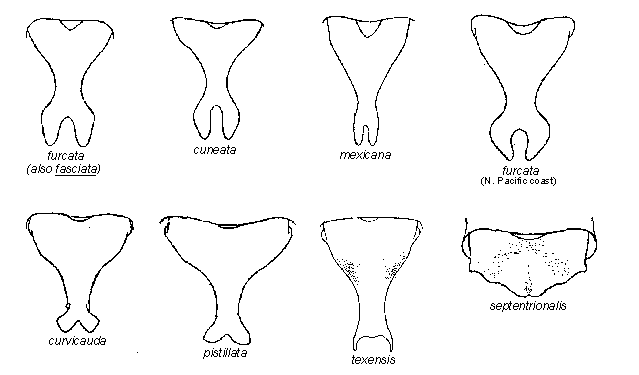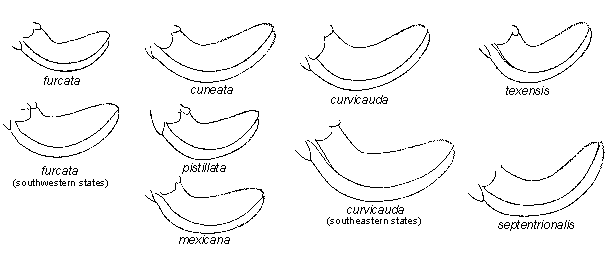| Key to genera of false katydids (Phaneropterinae). |
 |
In this lateral view of a male Scudderia furcata, the arrow indicates the dorsal process (or supra-anal plate). The curved process that meets it from below is the subgenital plate. Fig. 29 from Alexander, Pace, and Otte 1972. Drawing by Martha B Lackey. |


preparing |
starting to insert |
inserted |
starting to withdraw |
finished |